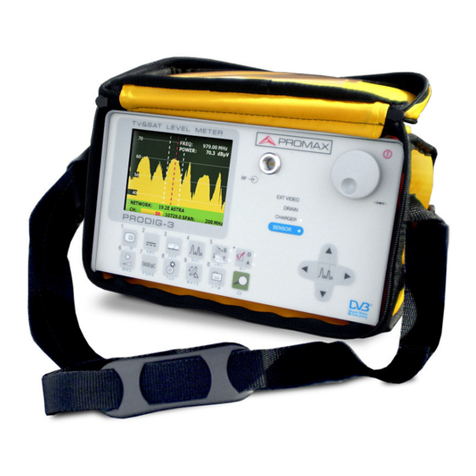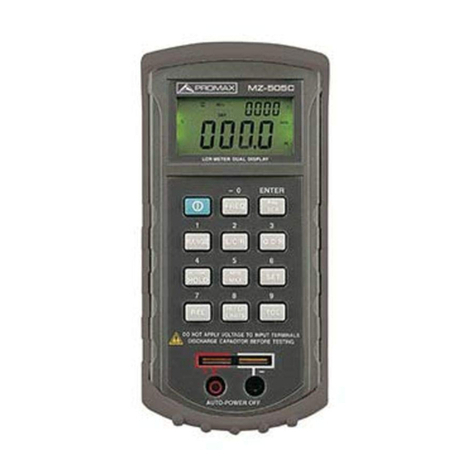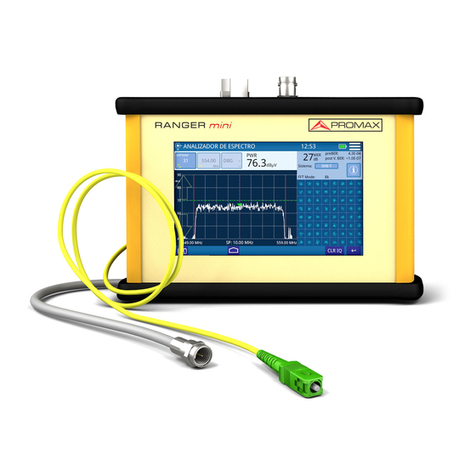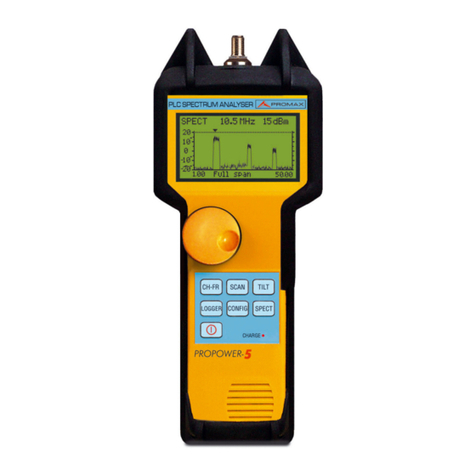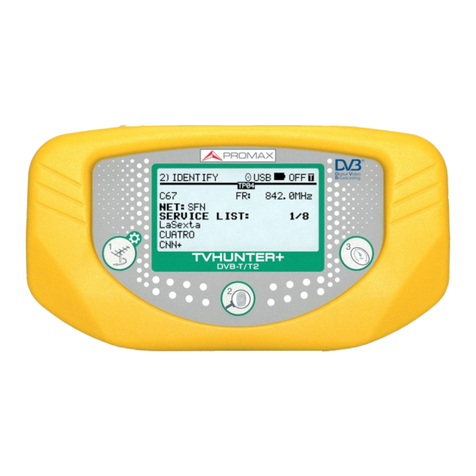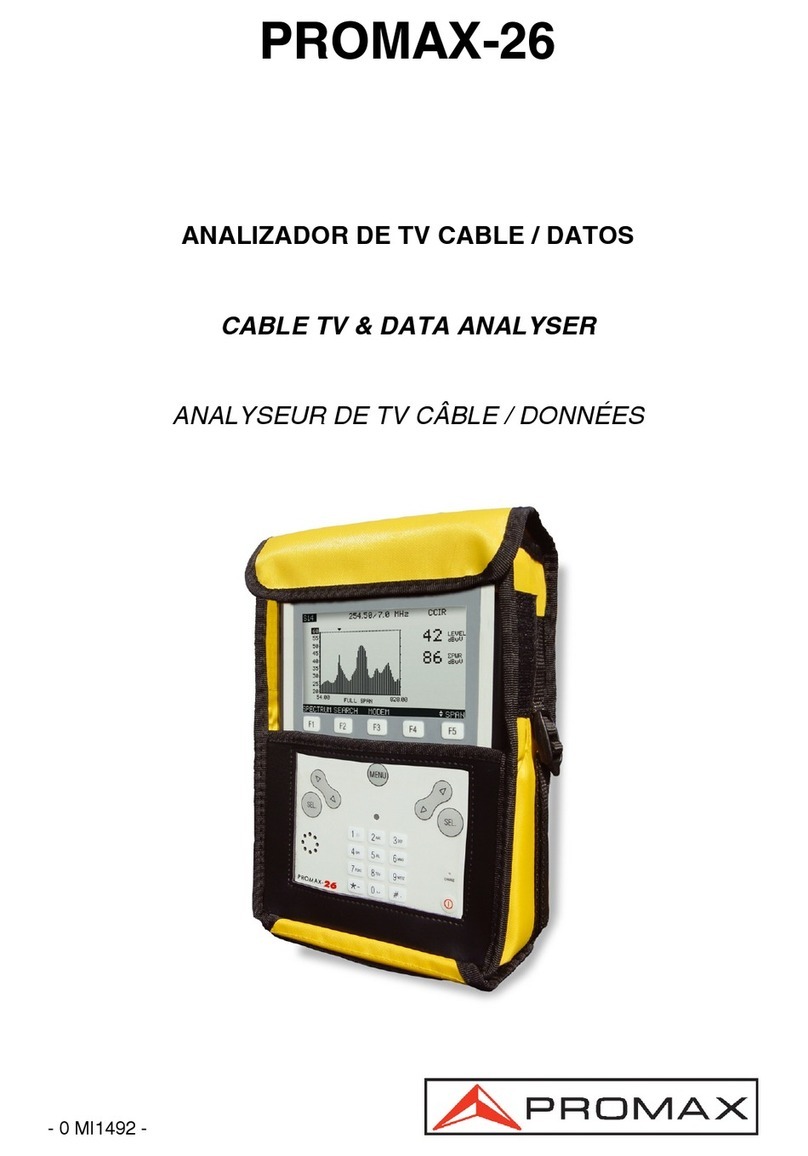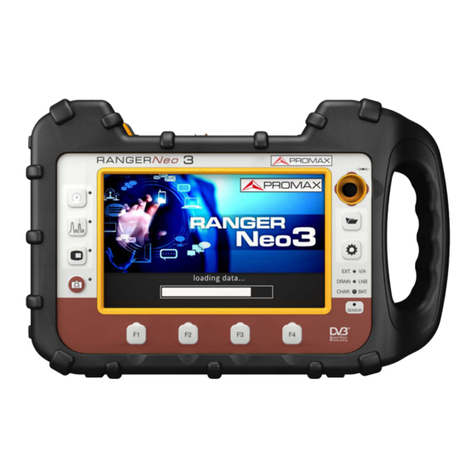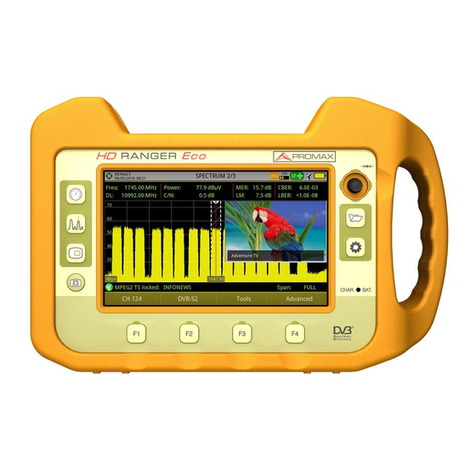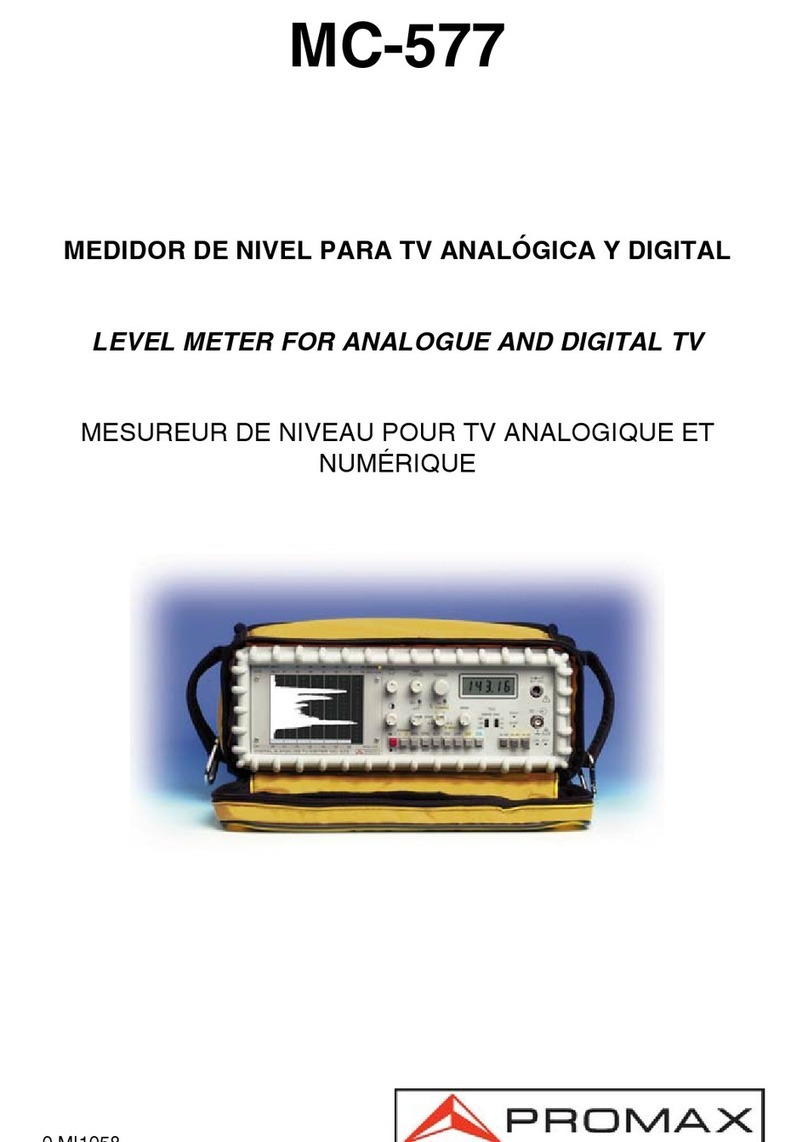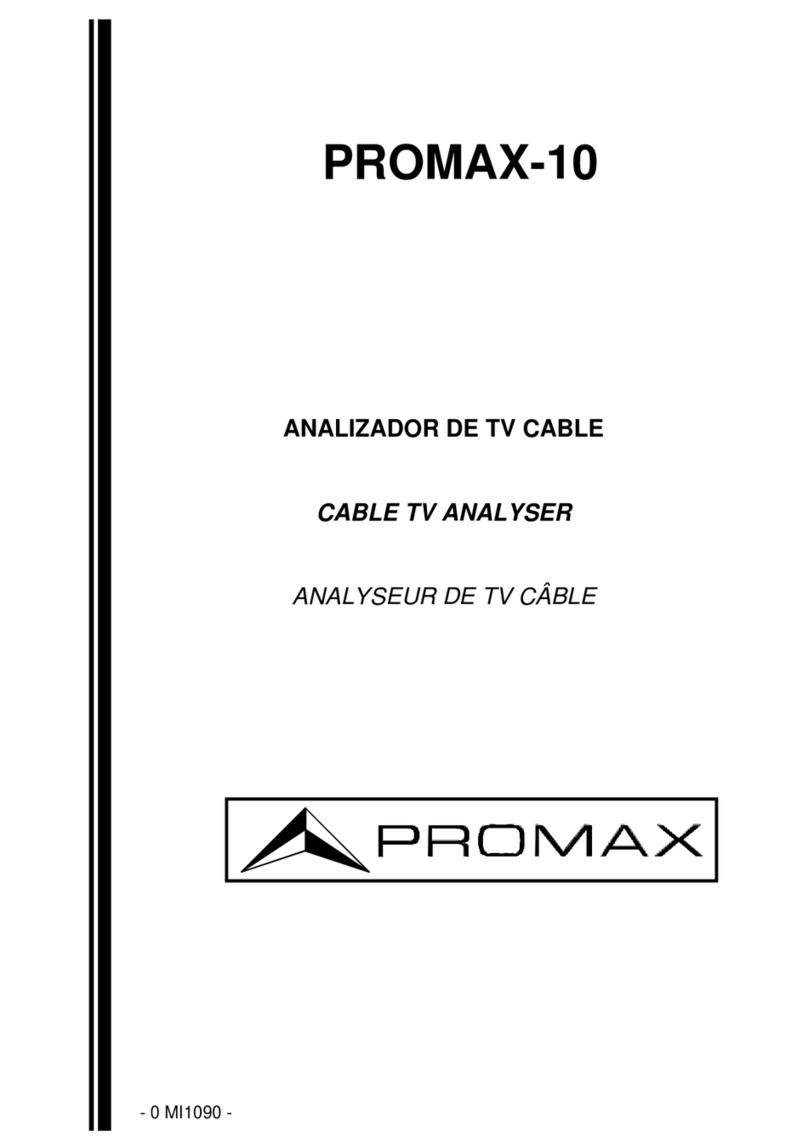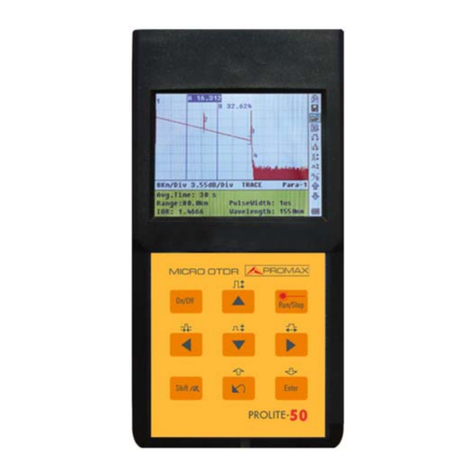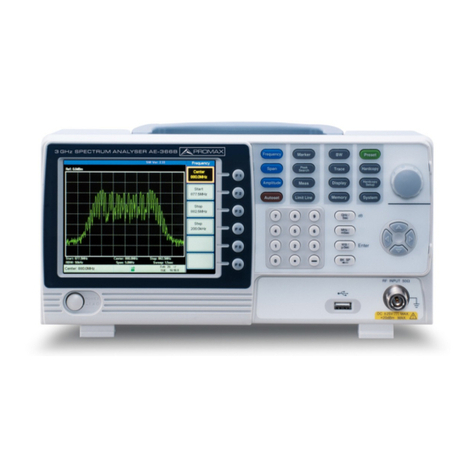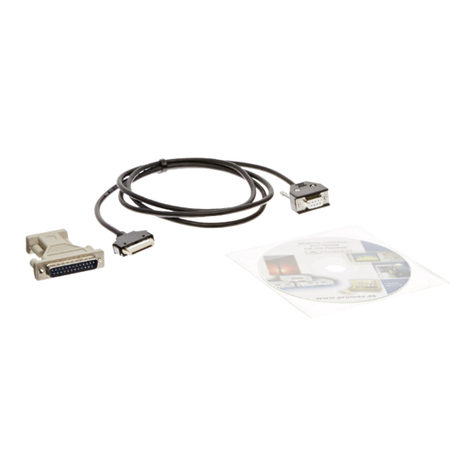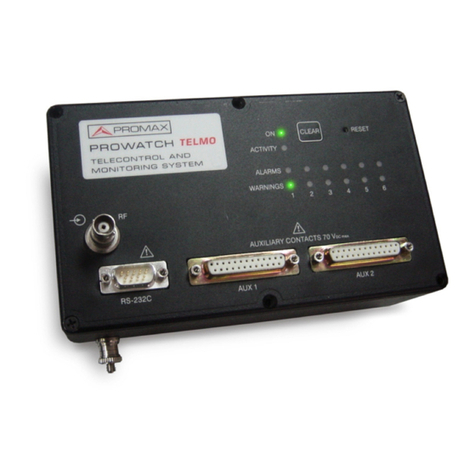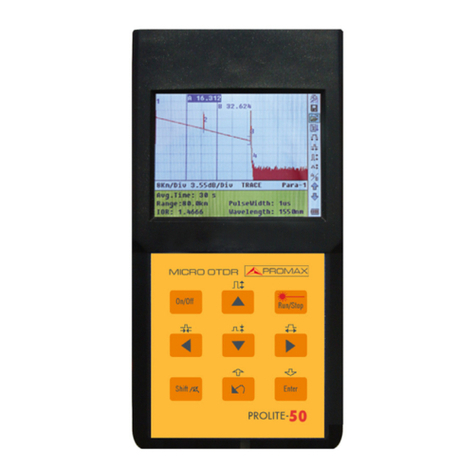January 2014
TABLE OF CONTENTS
1INTRODUCTION........................................................................................... 1
1.1 Description ....................................................................................... 1
2INSTALATION.............................................................................................. 2
2.1 Power Supply.................................................................................... 2
2.1.1 Operation Using the Mains Adapter................................................... 2
2.1.2 Operation Using the Battery ............................................................ 2
2.1.3 Battery Charging ........................................................................... 2
2.1.4 Recommendations using the battery................................................. 3
3OPERATING INSTRUCTIONS .......................................................................... 4
3.1 Descriptions of Controls and Elements .................................................. 4
3.2 Operating Instructions........................................................................ 5
3.2.1 SETUP Mode.................................................................................. 6
3.2.2 OPTICAL POWER METER Function (OPM) ........................................... 7
3.2.3 OPTICAL LOSS TEST SET Function.................................................... 9
3.2.4 THRESHOLD CONFIGURATION Mode................................................11
3.2.5 LOGGER Function..........................................................................12
3.3 Connecting to a computer..................................................................14
4CONTROL SOFTWARE PROLITE-63.................................................................15
4.1 Description ......................................................................................15
4.2 Hardware and software Requirements .................................................15
4.3 Installation ......................................................................................16
4.3.1 Software Installation .....................................................................16
4.4 LEGAL CONDITIONS..........................................................................16
4.4.1 Connection between PROLITE-63 and PC...........................................17
5INSTRUCTIONS FOR USING THE CONTROL SOFTWARE ....................................19
5.1 Start...............................................................................................19
5.2 Main window....................................................................................21
5.3 Menu bar.........................................................................................23
5.3.1 File.............................................................................................23
5.3.2 Loggers.......................................................................................24
5.3.3 Editors ........................................................................................24
5.3.4 Language ....................................................................................25
5.3.5 Upgrade ......................................................................................25
5.3.6 Help............................................................................................25
6SPECIFICATIONS ........................................................................................26
7MAINTENANCE ...........................................................................................28
7.1 Instructions for returning by mail........................................................28
7.2 Maintenance instructions ...................................................................28
7.2.1 Cleaning the cover........................................................................28
7.2.2 Not replaceable fuses by user.........................................................29
APPENDIX A: APPLICATION NOTE.....................................................................30
